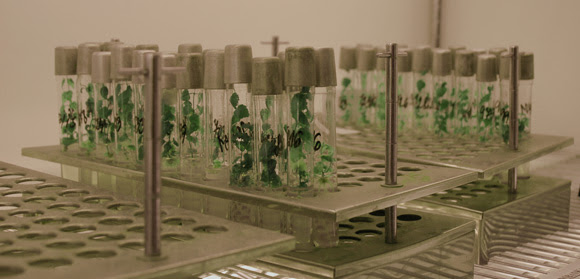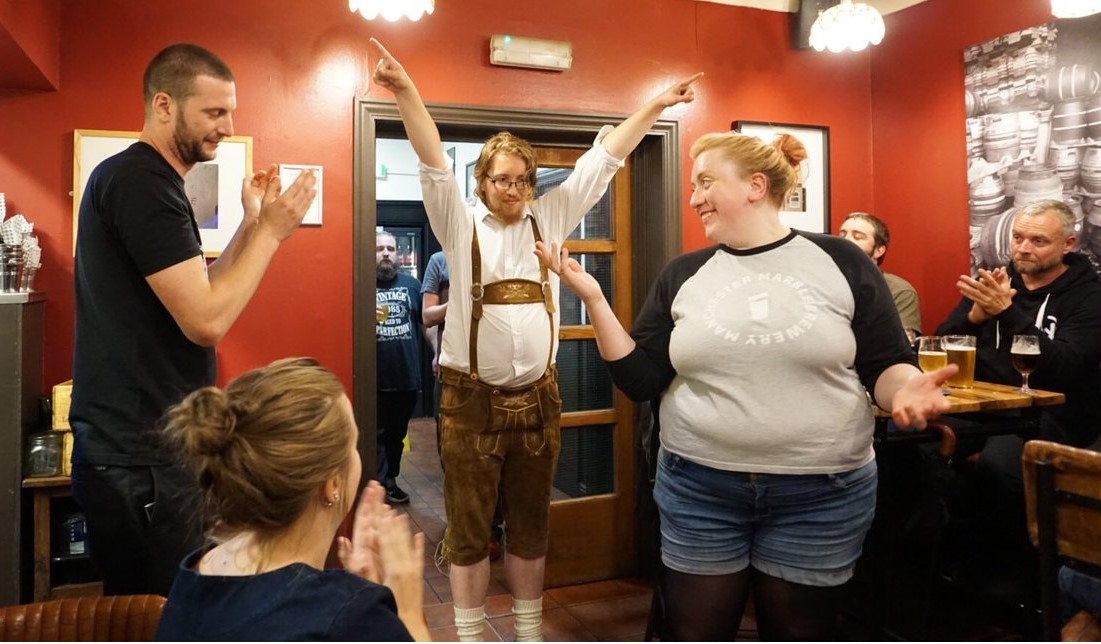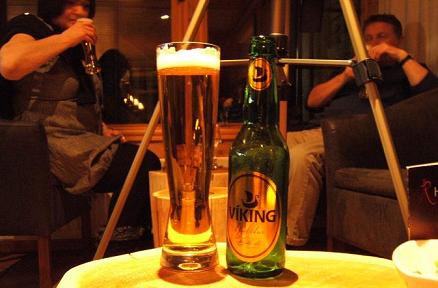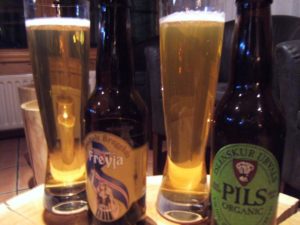On Tuesday, I had a great joke all prepared for my proctologist, analogizing with him or her over the election results. But… well, at least in the end, we seem to have had a good result. In both senses. Not much time for me to focus on the beer industry, however, which makes this week’s beer update as much news to me as to you. Let’s see what’s been going on.
First, speaking of biological science, Stan sent out his regular hops newsletter this week and, as exemplified by the photo up at the top, decided to provide some photos from the Hop Research Center in Hüll, Germany that Evan recently wrote about, as mentioned in last week’s news update. Up there, that’s a picture of some of the Center’s germ plasm collection of long-held varieties. Want more? You will have to pay Stan for back issues of his newsletter now if you want to see the images but haven’t subscribed already.*
The biggest story has to be the member of management at Founders giving testimony in a disposition that he did not know if someone who was… well, let’s see see how the story was covered:
A transcript of the exchange between Founders’ Detroit general manager Dominic Ryan and Evans’ attorney, Jack Schulz, shows Schulz shifting from shocked to incredulous and perhaps a bit angry as Ryan claims he had no idea Evans is Black. Instead of just answering the question and moving on, Ryan digs in deeper and deeper, repeatedly asking for clarification when Schulz asks questions like “Are you aware Tracy is Black?” At one point, Ryan even claims that he doesn’t know if former President Barack Obama, Kwame Kilpatrick, or Michael Jordan are African-American, because he has “never met them.”
The Beer Law Center tweeted: “This is stupid. The “if I didn’t say it, you can’t prove it” strategy – quite simply – sucks. The law, justice, trials, and courts, just don’t work that way. Shame on Founders.” As a practicing lawyer a quarter century into his career, I can’t disagree. The person diving the testimony did themselves no favours. Plenty of rightly offended folk now rejecting the brewery like Beery Ed: “if you still drink founders , you suck.” Which is true.
Boak and Bailey proposed a scoring system this week to determine if a British pub is in fact a pub.
Monty Python’s Terry Jones was on the BBC in 1984 and discussed both dental hygiene in medieval Britain and his brewing. Wogan preferred keg to cask. Jones, having a multi-faceted shirt malfunction announced: “real beer can only be made on a small scale.” Heed ye all!
Lisa Grimm has had a timely article published in Serious Eats about the haunted history of the Lemp family of brewers out of St. Louis:
Today’s beer history installment is something of a micro-level view of my previous column on German-American brewers—but this one has a Halloween twist. The story of the rise and fall of the Lemps, once one of America’s most powerful brewing families, reads like something out of gothic fiction; and, as would be entirely appropriate for that genre, some say that they’ve never left. The story begins familiarly enough…
A great technical article on barley came my way entitled “Characterising resilience and resource-use efficiency traits from Scots Bere and additional landraces for development of stress tolerant barley” I believe from @merryndineley. Now I have to go and look again at the standard for “landrace” when it comes to barley as I’ve seen husbandry in the 1600s but when we are talking bere we are talking about something much older than that as the abstract suggests:
Potential sources of viable resilience and resource-use efficiency traits are landraces local to areas of marginal land, such as the Scots Bere from the Highlands and Islands of Scotland. Bere barley is a deeply historically rooted landrace of barley that has been grown on predominately marginal land for the last half millennia. The landrace yields well in these conditions. The project aim was to assess and genetically characterise traits associated with enhanced resistance/tolerance, and to identify contributing genomic regions.
Speaking of great technical articles, I was blessed with a copy of an article on the history of Fuggles hops by the perennially referenced Martyn which, this time, appeared in Technical Quarterly published by Master Brewers Association:
The Fuggle hop is one of the most important varieties on the planet, not only in its own right as a contributor to the flavor of classic English beers for more than a century but also for the genes it has given to almost three dozen other hops… It is surprising, therefore, that until this year there was considerable mystery over the parentage of the Fuggle—it seemed to be unrelated to any other English hop type, with a hop oil profile much closer to the German landrace variety Tettnanger—and a fair amount of doubt and confusion over exactly who developed the hop and when it was first commercially available. Now, however, research in England and the Czech Republic has convincingly answered all the questions…
Nice article in Pellicle on the realities of the beer scene in Iceland:
We had moved up to the bar at Kaldi, and the low-hanging bulbs made the copper bar top and our bartender’s shaved head shine in the dim light. I had just ordered the Borg Garún Icelandic Stout Nr. 19, an 11.5% behemoth. If you haven’t heard, beer and food are pretty expensive Iceland. Pints of basic craft styles were $12-$15 (£9-£12) everywhere, and the higher in alcohol pours were $20-$30 (£15-£23).
Even at those prices, beats the hell out of an vaguely described essay on (what Canadians properly spell as) bologna. Sums something up.
Katie tweeting on junkets triggered that a discussion wasn’t the usual monocrop of defensiveness.
There was a discussion on Facebook on the early days of the British Guild of Beer Writers awards dinners with some entertaining recollections. Martyn** recalled a night 22 years ago:
The earliest awards dinner menu I have is from 1997 – ham cured in Newcastle Brown Ale (!), accompanied by figs steeped in Old Peculier, breast of guinea fowl braised in Fraoch heather ale, pears in porter and cheese served with McEwans Champion Beer. Dinner sponsored by Tesco …
Ah, the romance… Related perhaps is this thread about traditional brewing in today’s alcopop world.
That’s it? Yup. For further links, check out the Boak and Bailey news update on Saturday and then bend an ear towards the OCBG Podcast on Tuesdays. And look for mid-week notes from The Fizz as well.
*I don’t make the rules. Stan does.
**Again with the Martyn!!!





